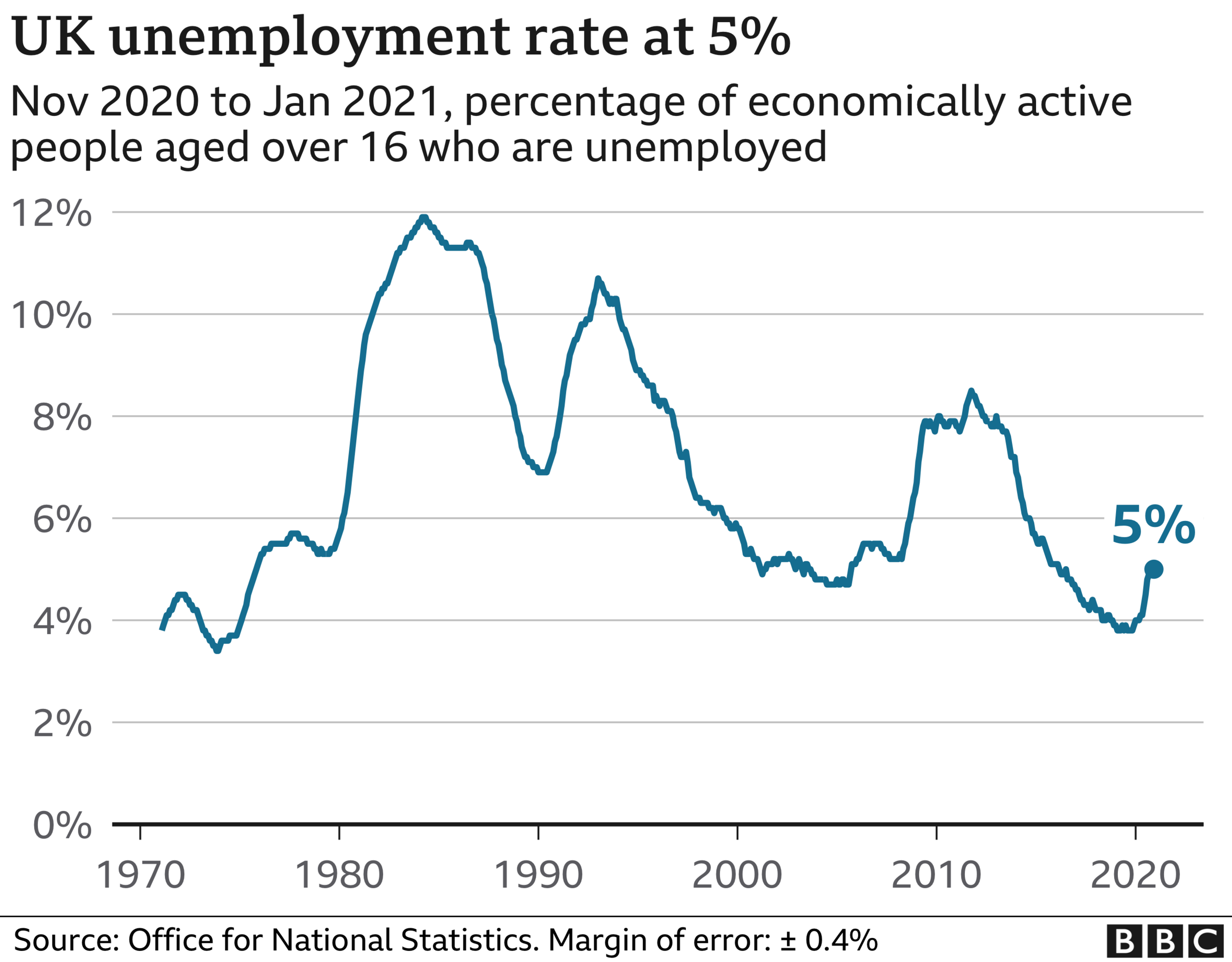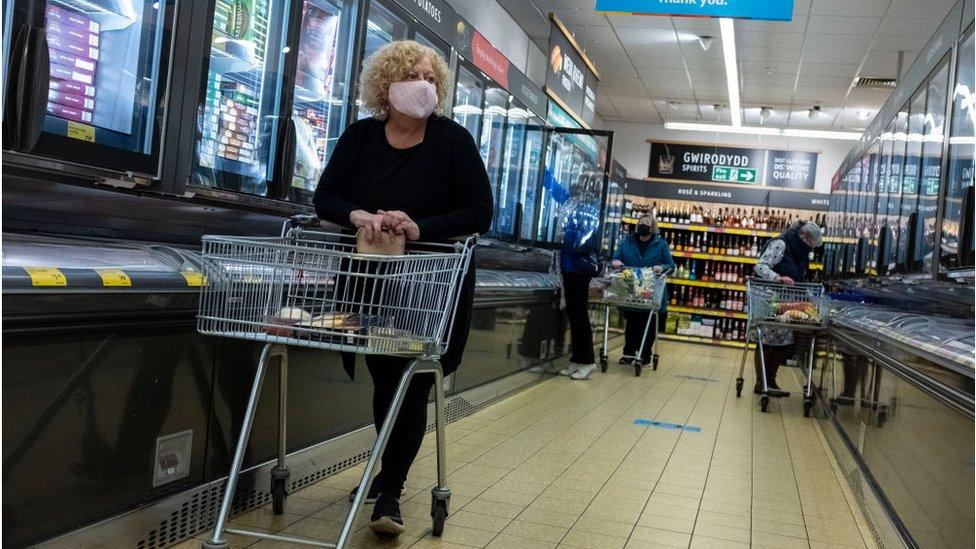Jobless crisis shows signs of easing but under-25s hit hard
- Published
- comments

The number of workers on company payrolls in the UK climbed by almost 200,000 in the three months to February, amid signs that the jobs market may be stabilising.
However, the number on payrolls is still 693,000 lower than last February, before Covid lockdown measures began.
It comes amid growing optimism that the vaccine rollout will lead to a faster-than-expected economic recovery.
The official unemployment rate now stands at 5%, external, down from 5.1% before.
Sam Beckett, head of economic statistics at the Office for National Statistics, told the BBC's Today programme there was still a lot of uncertainty in the jobs market.
She added that people aged under 25 continued to bear the brunt of the job losses.

"Furlough is still doing a lot of heavy lifting in the labour market. There are around five million people still on furlough, it's down from its peak of nine million but has been rising recently.
"But you have to remember the underlying picture is that close to 700,000 people have come off the payroll since the start of the pandemic so there has been a large fall in employment since the start
"Around two-thirds of the fall is under-25s. London has been particularly hard hit."
The latest figures cover a period when most parts of the UK entered strict lockdowns.
However, the number of workers on payroll increased for the third month in a row in February, the ONS said.
The number of redundancies across the UK also fell slightly to 11 per 1,000 people in January - down from 14 per 1,000 two months previously.
Despite this, the ONS said the jobs crisis remained acute, with 1.7 million people out of work - around a five-year high.
"People aged 50-plus are finding they are being overlooked"
It said the hospitality and retail industries had been hit particularly hard, with a total of 491,000 payroll jobs lost across both sectors since the pandemic began.
Nonetheless, commentators said they believed the worst may soon be over as the vaccine programme gradually allows the UK economy to reopen.
"Overall, we think employment is getting close to its trough," said Ruth Gregory, senior UK economist at Capital Economics. "We still expect the unemployment rate to rise to 6% by early 2022, but the bulk of that will be driven by those who left the labour force returning, rather than people losing their jobs."
It echoes projections from the government's fiscal watchdog, the Office for Budget Responsibility, which has forecast that the unemployment rate will peak at 6.5% this year instead of the 11.9% predicted last July.


Unemployment stayed generally stable in January despite further national lockdowns. On some weekly or monthly measures, joblessness actually fell a little to just below 5%, despite the compulsory closure of large swathes of the hospitality industry at the beginning of the year.
This is thanks to two factors - the fact that five million people are on the furlough scheme and the fact that employers have become better adapted to lockdowns.
The ONS also tried to assess just how many foreign workers left the UK last year. While some estimates had put the fall at over one million, the ONS suggested the fall was around 180,000, or the same as the population of the city of Portsmouth.
That is entirely the result of EU workers leaving the UK. The number of non-EU workers actually increased a little during the pandemic.

Becky O'Connor, head of pensions and savings at Interactive Investor, said the latest data showed "chinks of light" but that the impact of the crisis would be felt for some time to come.
"Even as work opportunities return, people who have lost their jobs or part of their income will need continued support as the economy opens back up.
"If the doors to work reopen for those people, their decimated personal finances from a year of lost income will take far longer to get back off the ground."

According to official figures, the UK economy shrank by 2.9% in January amid the third lockdown, but the drop was much smaller than expected, suggesting businesses have adapted to trading in lockdown.
It has added to growing expectations that the recovery will be stronger than previously expected, although last week the Bank of England cautioned that the outlook remained "unusually uncertain".
- Published26 March

- Published18 March 2021

- Published23 March 2021

- Published23 February 2021

- Published22 February 2021

- Published25 February 2021
